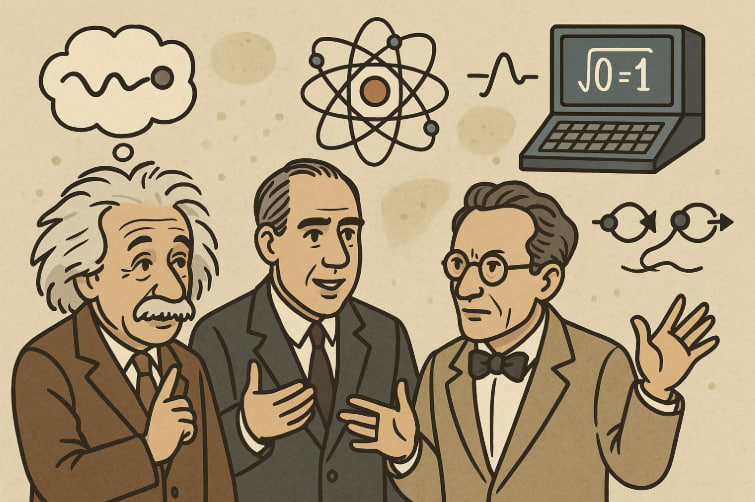Quantum physics is one of the most revolutionary and mysterious areas of science. It redefined our understanding of nature, challenging classical concepts and laying the foundation for modern technologies—from semiconductors to quantum computers. This article traces the history of quantum physics, highlighting the key milestones and figures who shaped its evolution.
The Birth of Quantum Theory
At the dawn of the 20th century, classical physics struggled to explain certain phenomena—most notably, blackbody radiation and the photoelectric effect. In 1900, German physicist Max Planck introduced the idea that energy is not continuous but comes in small discrete packets called quanta. He proposed that energy EEE is related to frequency fff through the formula:
E=hfE = hfE=hf
Here, hhh is Planck’s constant. This radical idea launched the era of quantum theory.
Einstein and the Photoelectric Effect
In 1905, Albert Einstein expanded on Planck’s theory to explain the photoelectric effect, where light striking a metal surface ejects electrons. He proposed that light behaves as a stream of particles—photons—each carrying a quantum of energy. This earned him the Nobel Prize in 1921 and confirmed that light has both wave and particle properties.
Bohr’s Model and Atomic Structure
In 1913, Niels Bohr applied quantum principles to atomic structure. He suggested that electrons orbit the nucleus in fixed energy levels, and they emit or absorb energy only when moving between these levels. Though later replaced by more accurate models, Bohr’s theory was crucial in advancing atomic physics.
Heisenberg, Schrödinger, and Quantum Mechanics
By the 1920s, scientists realized a new mathematical framework was needed. Two key developments emerged:
- Werner Heisenberg introduced matrix mechanics, which described quantum systems using matrices and probabilities.
- Erwin Schrödinger formulated wave mechanics, describing particles as wavefunctions evolving through his famous Schrödinger equation.
Though different in form, both theories were shown to be mathematically equivalent and became core components of quantum mechanics.
Uncertainty and Probability
Quantum mechanics introduced profound philosophical implications. Heisenberg’s uncertainty principle stated that it is impossible to know both the position and momentum of a particle with perfect accuracy. This broke away from deterministic Newtonian physics and introduced a probabilistic view of reality.
“God does not play dice,” Einstein famously objected, but experiments continue to support quantum theory’s probabilistic nature.
Quantum Field Theory and the Standard Model
In the mid-20th century, physicists developed quantum electrodynamics (QED) and quantum chromodynamics (QCD)—theories describing the behavior of subatomic particles and their interactions through quantum fields. These theories were unified into the Standard Model, a framework that explains the electromagnetic, weak, and strong nuclear forces.
Modern Applications and Future Frontiers
Quantum physics underpins many technologies we rely on today: lasers, MRI machines, transistors, and semiconductors. In recent decades, we’ve entered the second quantum revolution with the rise of:
- Quantum computing
- Quantum cryptography
- Quantum teleportation
- Entanglement-based communication
These innovations promise to transform industries, solve previously unsolvable problems, and further blur the line between science and science fiction.
Glossary
- Quantum — A discrete quantity of energy.*
- Photon — A particle of light that carries energy in quantum form.*
- Wavefunction — A mathematical function that describes the quantum state of a particle.*
- Uncertainty Principle — A fundamental limit to how precisely certain pairs of physical properties can be known.*
- Quantum Entanglement — A phenomenon where particles remain interconnected, sharing states instantly over distance.*


